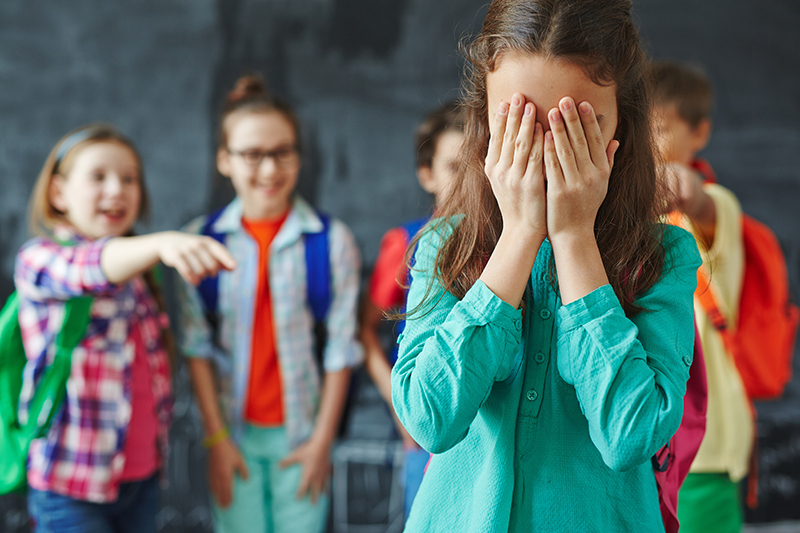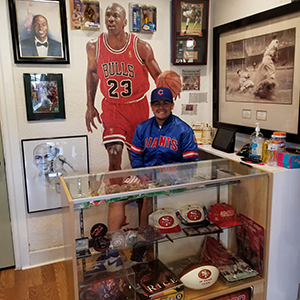In 2014, the Centers for Disease Control and Department of Education released the first federal definition of bullying.
- unwanted aggressive behavior
- observed or perceived power imbalance
- repetition or high likelihood of repetition of bullying behaviors
Bullying can be verbal, social or physical. It affects ALL youth; those who are bullied, those who bully, and those who witness it. The effects can last into adulthood.
Bullying in Schools
About 22% of students ages 12- 18 said they were bullied at school. The majority said the bullying occurred between one and 10 days, according to the most recent available data from the Bureau of Justice Statistics (BJS) and the National Center for Education Statistics (NCES). Being the subject of rumors or being insulted were the most common forms of bullying. Fewer than half said they notified a teacher or other adult.
Cyberbullying
In a 2022 study, only 6% of teens 13-17 say online harassment or bullying is NOT a problem. 40% say it is a minor problem and 53% say it is a MAJOR problem. 46% say they have encountered cyberbullying themselves.
The most common type of online bullying for teens in this age group is being called an offensive name (32% experienced this). 22% have had false rumors spread about them online and 17% were sent explicit images they didn’t ask for.
The Profile of a Bully
A simple profile of those involved in bullying does not exist. Some bullies are well connected and some are marginalized. They may be bullied themselves, just as those who are bullied sometimes bully others. They may be easily peer pressured, see aggression as a positive, and have friends who bully. Some come from a family environment with aggression, a lack of emotional support, overly lenient, overly reactive, or uninvolved. They may lack social skills, self esteem or self regulation, according to stopbullying.gov.
The Profile of a Victim
Youth with disabilities, LGBTQ youth and socially isolated youth are at greater risk of bullying. A higher percentage of youth who are perceived as different, are anxious, depressed, or have limited friendships are more vulnerable to bullying. Those who are seen as annoying, provoking, or antagonizing are bullied more often than others. However, even if a child has risk factors for being a victim of bullying, it does not mean they will be.
What Can Be Done to Help
There are no simple solutions to bullying. The approaches showing the most promise are those that involve families, students and the whole school staff in creating a culture of respect. Zero tolerance and expulsion are not effective approaches.
An important mantra to teach youth is the STOP, WALK, TALK – Indicate through words and gestures to STOP. WALK away if the problem continues. TALK to an adult if the issue is still not resolved.
Talk openly with children about how important it is to respect those with different abilities, cultures, and backgrounds. Role model assertiveness, which is standing up for oneself in a respectful way.
Those who witness bullying are referred to as Bystanders. They can make a huge difference by simply standing or sitting near the child who is being bullied.
Helping youth participate in activities like playing sports, music, or joining a school club allows them to meet others with similar interests. They will build confidence and friendships that help insulate them from bullying.
Initiate talks in the car or over a meal. Keep it casual, light and curious. Listen. Ask open ended questions about their day or activities.
For example, What’s the funniest thing that happened today? What was the best and worst thing that happened today? What new thing did you learn about someone else this week? What would you change about today?
The Bottom Line
ALL children are affected by bullying, so understanding that your child may experience it, witness it or even participate in it is the first step. Adults can help prevent bullying by talking to children about it, encouraging them to do what they love, modeling kindness, respect and assertiveness, and seeking help when needed.
Carrie Goodwin, MS, PPSC, has over 20 years of experience counseling children in Santa Clara and Santa Cruz county schools. Former CASA, Teacher of the Year, Innovator of the Year, current PVUSD Elementary Counselor and Private Practice SEL Coach. Contact her at groupsforkids@gmail.com








